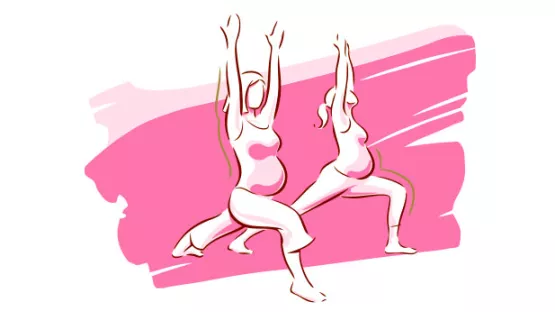
Pregnancy water aerobics – trend or fad?
Let's have a look at this popular trend among expectant mums abroad
A professional water aerobics instructor has expressed that this exercise has been popular among pregnant mums overseas for many years for a few reasons. With water buoyancy, even mums in the later stages of pregnancy can engage in water aerobics, including some light jumping movements, without much strain. At the same time, water aerobics effectively trains their thighs, arms and various other muscles because of water resistance. Finally, this form of exercise also protects your bones.
Benefits of exercise during pregnancy
- Effectively relieves pregnancy discomfort:
Water aerobics trains and strengthens your abdomen, back, chest, hip, and leg muscles, helping pregnant mums to maintain weight and cardiovascular functioning, to relieve backaches, while preventing problems like varicose veins and oedema. - You don't have to know how to swim:
Water aerobics does not involve your head going underwater, so mums who can't swim can still take part! - No sweaty discomfort:
For those who dislike heavy sweating after exercise, this in-water exercise sets you free from sweaty discomfort. - The steps of water aerobics for pregnant women are easy to learn, including front-to-back and left-to-right pushing and pulling of the arms; marking time, light jumping, raising legs, kicking, frog kicks, and so on. Women in the later stages of pregnancy can also practice these steps.
The steps of water aerobics for pregnant women are easy to learn, including front-to-back and left-to-right pushing and pulling of the arms; marking time, light jumping, raising legs, kicking, frog kicks, and so on. Women in the later stages of pregnancy can also practice these steps.
Have family members accompany you because safety is always your top priority
The water aerobics instructor has also advised that expectant mothers can carry out water aerobics under doctors' advice, after their pregnancy has become stable. As long as there is no water break, bleeding, or lower abdominal pain, mums in the final stage of pregnancy can continue to practice this exercise. While the steps of water aerobics are very simple, you are still strongly advised to carry out the exercise under the supervision of professional instructors, medical personnel, or family members. Remember that safety is always your top priority, and try to go to pools that are dedicated to pregnant ladies. If you choose to go to public pools, keep a distance from crowds and wear anti-slip footwear at all times to avoid slipping.
Take part in water aerobics classes designed for expectant mums
Water aerobics classes for expectant mums are carried out in pools with a water temperature of about 29 - 30°C, which is the most suitable temperature. Lower water temperature can easily trigger uterine contraction, causing frequent urges to urine. Worse still, frequent trips between the pool and the toilet inevitably put you in a greater risk for slipping. Besides, you might easily catch a cold due to the change in temperature between the water and the pool area.
RELATED ARTICLES
